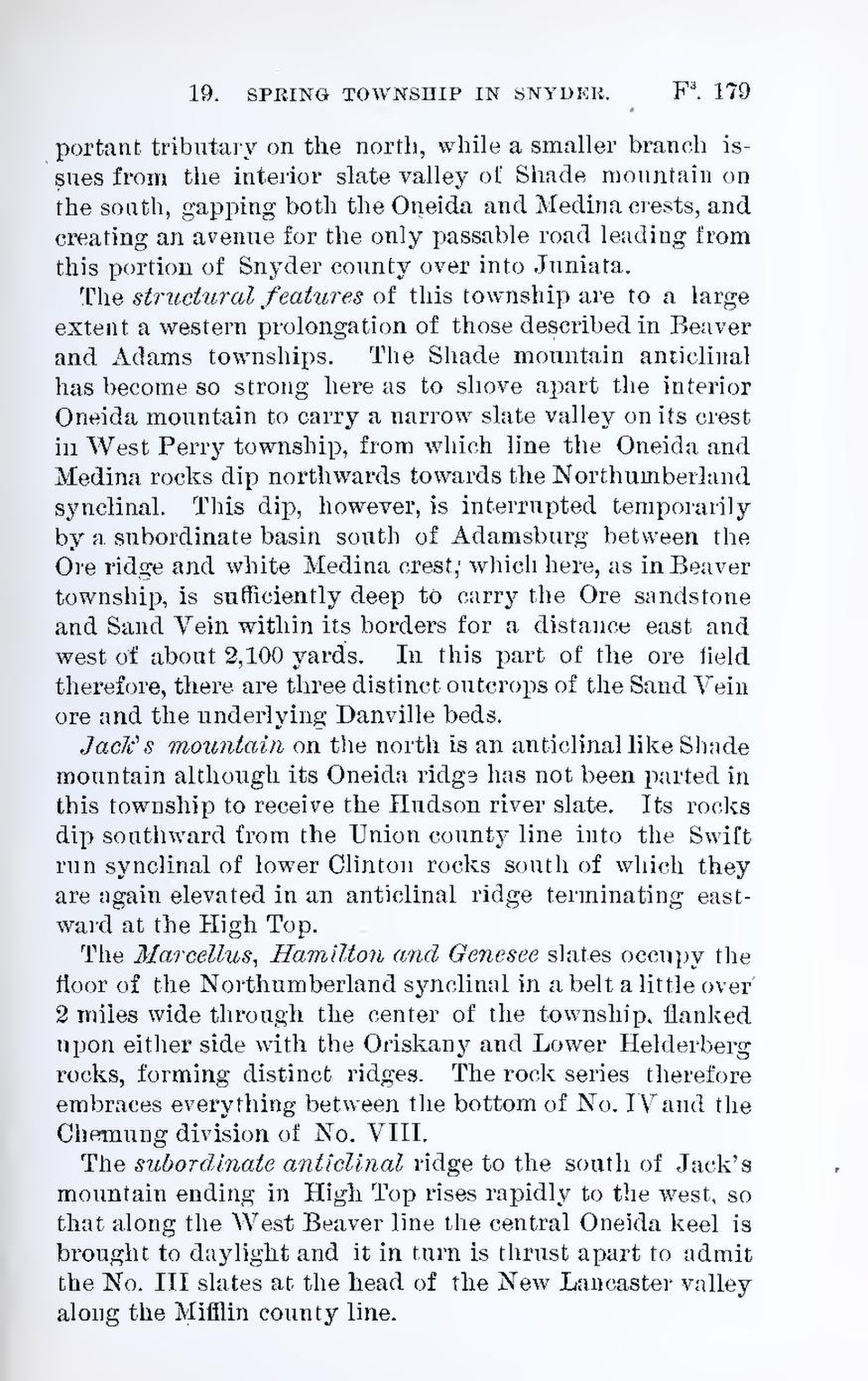portant tributary on the north, while a smaller branch issues from the interior slate valley of Shade mountain on the south, gapping both the Oneida and Medina crests, and creating an avenue for the only passable road leading from this portion of Snyder county over into Juniata.
The structural features of this township are to a large extent a western prolongation of those described in Beaver and Adams townships. The Shade mountain anticlinal has become so strong here as to shove apart the interior Oneida mountain to carry a narrow slate valley on its crest in West Perry township, from which line the Oneida and Medina rocks dip northwards towards the Northumberland synclinal. This dip, however, is interrupted temporarily by a subordinate basin south of Adamsburg between the Ore ridge and white Medina crest; which here, as in Beaver township, is sufficiently deep to carry the Ore sandstone and Sand Vein within its borders for a distance east and west of about 2,100 yards. In this part of the ore field therefore, there are three distinct outcrops of the Sand Vein ore and the underlying Danville beds.
Jack’s mountain on the north is an anticlinal like Shade mountain although its Oneida ridge has not been parted in this township to receive the Hudson river slate. Its rocks dip southward from the Union county line into the Swift run synclinal of lower Clinton rocks south of which they are again elevated in an anticlinal ridge terminating eastward at the High Top.
The Marcellus, Hamilton and Genesee slates occupy the floor of the Northumberland synclinal in a belt a little over 2 miles wide through the center of the township, flanked upon either side with the Oriskany and Lower Helderberg rocks, forming distinct ridges. The rock series therefore embraces everything between the bottom of No. IV and the Chemung division of No. VIII.
The subordinate anticlinal ridge to the south of Jack’s mountain ending in High Top rises rapidly to the west, so that along the West Beaver line the central Oneida keel is brought to daylight and it in turn is thrust apart to admit the No. III slates at the head of the New Lancaster valley along the Mifflin county line.
